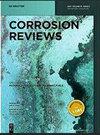Effect of surface machining on the environmentally-assisted cracking of Alloy 182 and 316L stainless steel in light water reactor environments: results of the collaborative project MEACTOS
IF 3.2
4区 材料科学
Q3 ELECTROCHEMISTRY
引用次数: 1
Abstract
Abstract The main objective of the EU-funded project mitigating environmentally-assisted cracking through optimisation of surface condition (MEACTOS) was to gain knowledge on the ability of different surface machining procedures to mitigate environmentally-assisted cracking (EAC) in typical light water reactor structural materials and environments. Surfaces of cold-worked (CW) type 316L austenitic stainless steel and nickel-based weld metal Alloy 182 flat tapered tensile specimens were machined using different processes. EAC initiation susceptibility of these specimens was evaluated using constant extension rate tensile (CERT) tests under simulated boiling water reactor (BWR) and pressurized water reactor (PWR) conditions and assessed using constant load experiments. More than a hundred tests were performed covering about 10 years of autoclave testing time. Only minor or no measurable improvements in EAC initiation susceptibility as a function of surface treatments (grinding or advanced machining) compared to the standard industrial face milling were demonstrated. In most cases, the stress thresholds for EAC initiation determined in constant load tests confirmed the trend obtained from CERT tests. This paper summarises the most important results and conclusions concerning the EAC initiation behaviour for the CW 316L and Alloy 182 under reducing PWR and oxidizing BWR conditions.表面加工对轻水反应堆环境中182和316L合金不锈钢环境辅助开裂的影响:MEACTOS合作项目的结果
摘要欧盟资助的通过表面条件优化减轻环境辅助开裂项目(MEACTOS)的主要目标是了解不同表面加工程序减轻典型轻水反应堆结构材料和环境中环境辅助开裂的能力。使用不同的工艺对冷加工(CW)型316L奥氏体不锈钢和镍基焊接金属合金182扁平锥形拉伸试样的表面进行了机加工。在模拟沸水反应堆(BWR)和压水反应堆(PWR)条件下,使用恒定拉伸速率拉伸(CERT)试验评估这些试样的EAC引发敏感性,并使用恒定载荷实验评估。进行了一百多次测试,覆盖了大约10年的高压釜测试时间。与标准工业面铣相比,表面处理(磨削或高级机械加工)对EAC引发敏感性的改善很小或没有可测量的改善。在大多数情况下,在恒载试验中确定的EAC启动的应力阈值证实了CERT试验得出的趋势。本文总结了CW 316L和合金182在还原压水堆和氧化沸水堆条件下EAC引发行为的最重要结果和结论。
本文章由计算机程序翻译,如有差异,请以英文原文为准。
求助全文
约1分钟内获得全文
求助全文
来源期刊

Corrosion Reviews
工程技术-材料科学:膜
CiteScore
5.20
自引率
3.10%
发文量
44
审稿时长
4.5 months
期刊介绍:
Corrosion Reviews is an international bimonthly journal devoted to critical reviews and, to a lesser extent, outstanding original articles that are key to advancing the understanding and application of corrosion science and engineering in the service of society. Papers may be of a theoretical, experimental or practical nature, provided that they make a significant contribution to knowledge in the field.
 求助内容:
求助内容: 应助结果提醒方式:
应助结果提醒方式:


